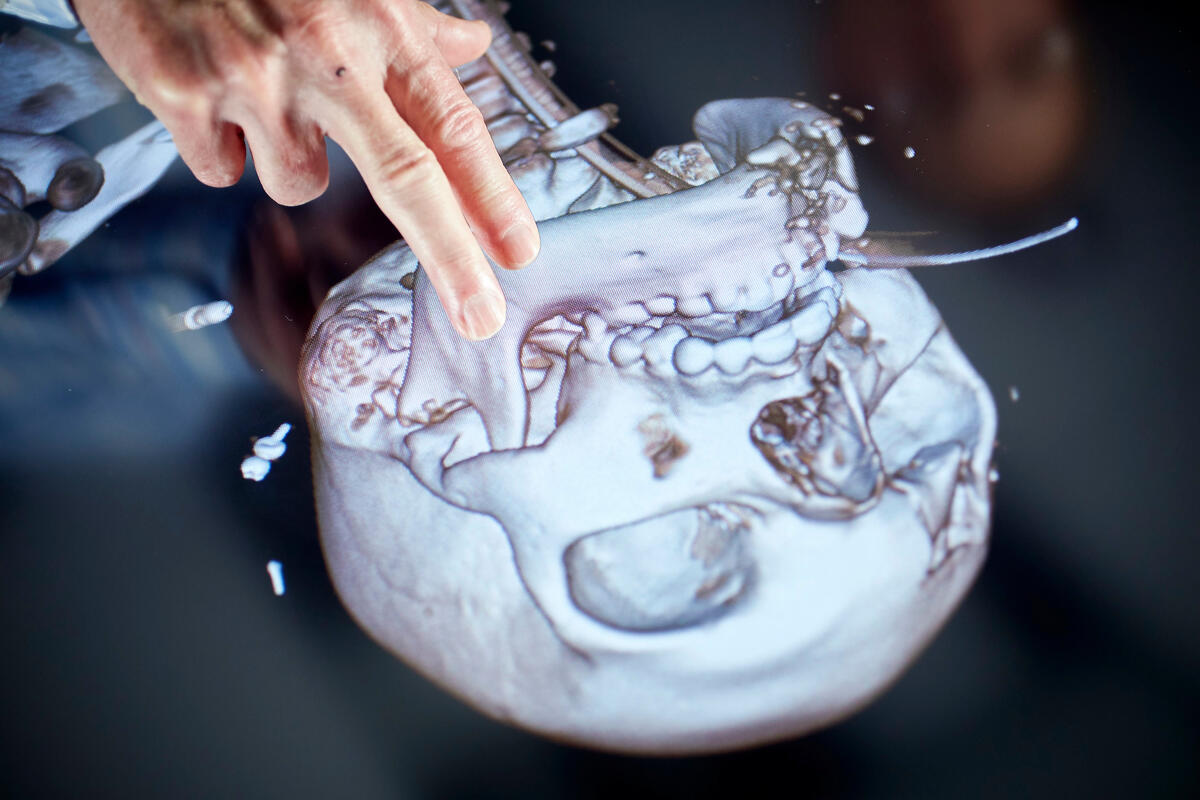Boxers, martial arts athletes, and other professional fighters may soon be able to identify the likelihood of developing severe brain damage earlier than ever before based on the findings of a new study led by UNLV in collaboration with the Cleveland Clinic Lou Ruvo Center for Brain Health.
Chronic traumatic encephalopathy (CTE) is a degenerative brain disease linked to repeated head impacts that athletes get from contact sports. However, the definitive diagnosis of the disease can be made only after death through an autopsy.
The UNLV-led research team found that traumatic encephalopathy syndrome — a condition characterized by cognitive impairment, behavior changes and other factors — appears to be a potential precursor to the development of CTE. The study was published this week in Neurology, the medical journal of the American Academy of Neurology.
“These findings suggest that this new diagnosis of traumatic encephalopathy syndrome may be useful in professional sports such as boxing and mixed martial arts and may be helpful in predicting who may experience cognitive decline,” said study author Brooke D. Conway Kleven, research faculty with the UNLV School of Public Health.
The study involved a cohort of 130 active and retired professional fighters in boxing, martial arts, and mixed martial arts as a part of Cleveland Clinic Lou Ruvo Center for Brain Health’s longitudinal Professional Athletes Brain Health Study. Participants had brain scans and took cognitive tests at the beginning of the study. A total of 52 people, or 40%, met the criteria for traumatic encephalopathy syndrome. Over 80% of those who met the criteria reported that boxing was their only form of fighting.
Then, participants had annual brain scans and cognitive tests for up to six years.
The people who met the criteria for traumatic encephalopathy syndrome had greater declines in brain volume than those who did not meet the criteria. They also had a faster annual rate of decline in brain volume. For example, in the hippocampus area of the brain that plays a role in memory, those with traumatic encephalopathy syndrome had volumes 385 cubic millimeters (mm³) smaller than those without the syndrome. And those with the syndrome were losing volume at an average rate of 41 mm3 per year faster than those without..
The people with traumatic encephalopathy syndrome had slower reaction times and lower scores on all the cognitive tests than those without the syndrome. These differences remained after researchers adjusted for age, education and other factors that could affect test scores.
“Our results suggest that the criteria for traumatic encephalopathy syndrome can identify people who are more likely to have worsening brain shrinkage and cognitive issues over time, while those who do not meet the criteria for the syndrome remain relatively stable,” Conway Kleven said. “Further research is needed to validate the accuracy of these criteria in detecting CTE.”
A limitation of the study was that athletes reported their own information, so it could not be verified for accuracy.
About the Study
“Longitudinal Changes in Regional Brain Volumes and Cognition of Professional Fighters With Traumatic Encephalopathy Syndrome” was published June 28 in Neurology, a journal of the American Academy of Neurology.
Study co-authors include: Lung-Chang Chien, Brian Labus, and Chad L. Cross with UNLV’s School of Public Health; Arturo Montes with the Kirk Kerkorian School of Medicine at UNLV; and Aaron Ritter, Rebekah Randall, and Charles Bernick with the Cleveland Clinic Lou Ruvo Center for Brain Health.



